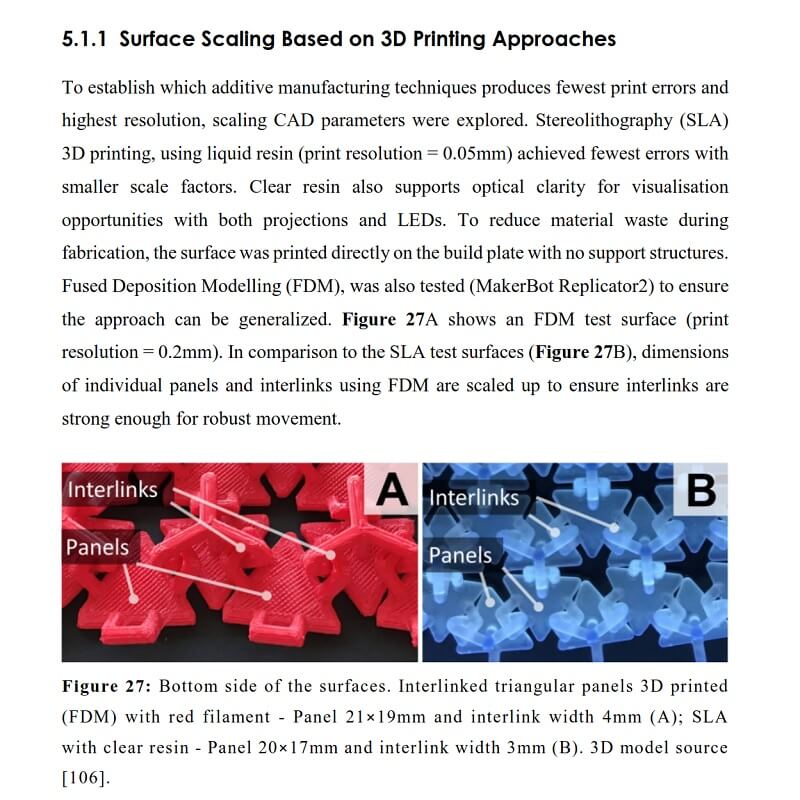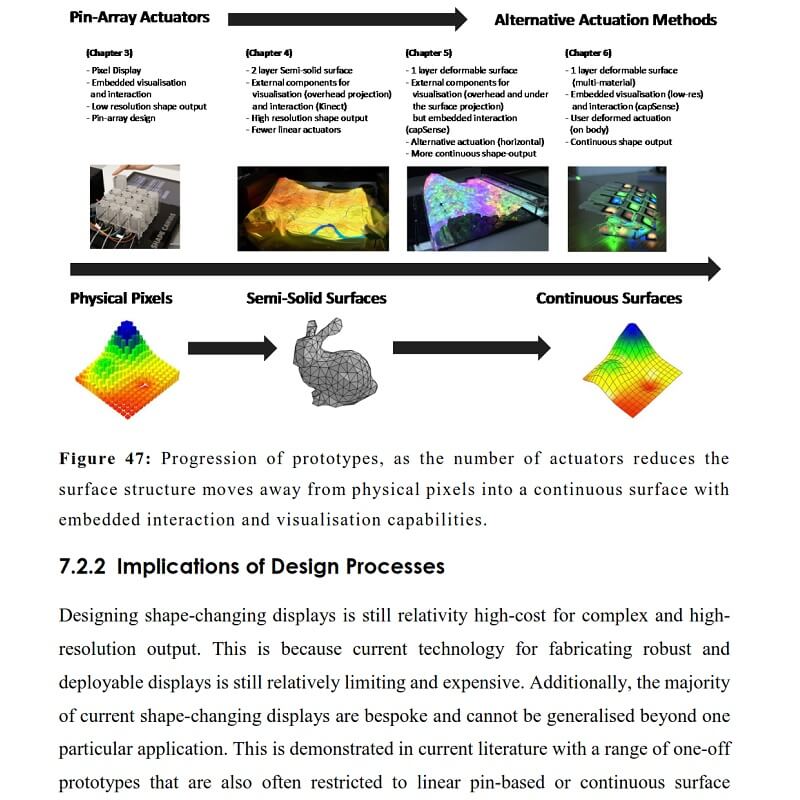Shape-Changing Displays
Digital Fabrication Approaches for
the Design and Development of
Shape-Changing Displays
Aluna Everitt
This dissertation is submitted for the degree of Doctor of Philosophy
School of Computing and Communications Lancaster University
February 2020

Interactive shape-changing displays enable dynamic representations of data and information through physically reconfigurable geometry. The actuated physical deformations of these displays can be utilised in a wide range of new application areas, such as dynamic landscape and topographical modelling, architectural design, physical telepresence and object manipulation.
 Traditionally, shape-changing displays have a high development cost in mechanical complexity, technical skills and time/finances required for fabrication. There is still a limited number of robust shape-changing displays that go beyond one- off prototypes. Specifically, there is limited focus on low-cost/accessible design and development approaches involving digital fabrication (e.g. 3D printing).
Traditionally, shape-changing displays have a high development cost in mechanical complexity, technical skills and time/finances required for fabrication. There is still a limited number of robust shape-changing displays that go beyond one- off prototypes. Specifically, there is limited focus on low-cost/accessible design and development approaches involving digital fabrication (e.g. 3D printing).
 To address this challenge, this thesis by Aluna Everitt, presents accessible digital fabrication approaches that support the development of shape-changing displays with a range of application examples – such as physical terrain modelling and interior design artefacts. Both laser cutting and 3D printing methods have been explored to ensure generalisability and accessibility for a range of potential users.
To address this challenge, this thesis by Aluna Everitt, presents accessible digital fabrication approaches that support the development of shape-changing displays with a range of application examples – such as physical terrain modelling and interior design artefacts. Both laser cutting and 3D printing methods have been explored to ensure generalisability and accessibility for a range of potential users.
 The first design-led content generation explorations show that novice users, from the general public, can successfully design and present their own application ideas using the physical animation features of the display. By engaging with domain experts in designing shape-changing content to represent data specific to their work domains the thesis was able to demonstrate the utility of shape-changing displays beyond novel systems and describe practical use-case scenarios and applications through rapid prototyping methods.
The first design-led content generation explorations show that novice users, from the general public, can successfully design and present their own application ideas using the physical animation features of the display. By engaging with domain experts in designing shape-changing content to represent data specific to their work domains the thesis was able to demonstrate the utility of shape-changing displays beyond novel systems and describe practical use-case scenarios and applications through rapid prototyping methods.
 This thesis then demonstrates new ways of designing and building shape-changing displays that goes beyond current implementation examples available (e.g. pin arrays and continuous surface shape-changing displays). To achieve this, the thesis demonstrates how laser cutting and 3D printing can be utilised to rapidly fabricate deformable surfaces for shape-changing displays with embedded electronics. This thesis is concluded with a discussion of research implications and future direction for this work.
This thesis then demonstrates new ways of designing and building shape-changing displays that goes beyond current implementation examples available (e.g. pin arrays and continuous surface shape-changing displays). To achieve this, the thesis demonstrates how laser cutting and 3D printing can be utilised to rapidly fabricate deformable surfaces for shape-changing displays with embedded electronics. This thesis is concluded with a discussion of research implications and future direction for this work.
































Comments